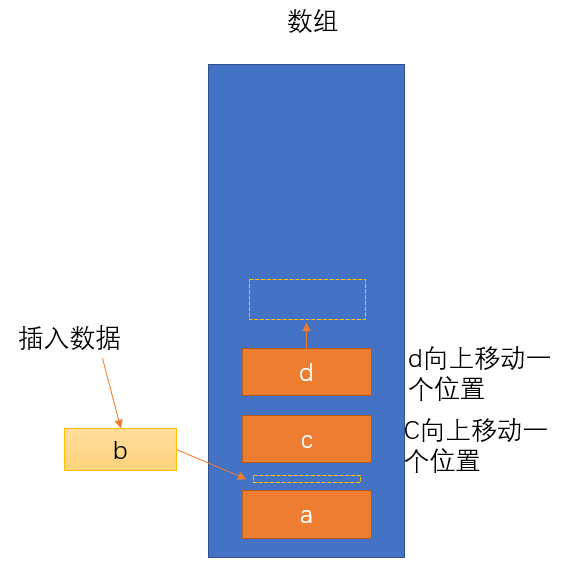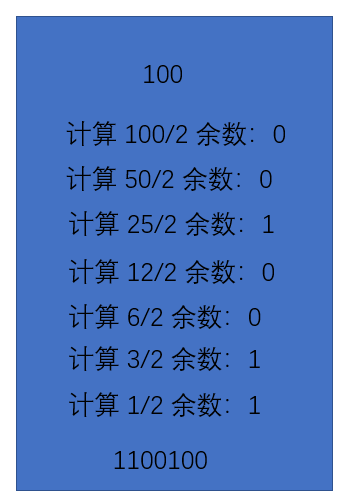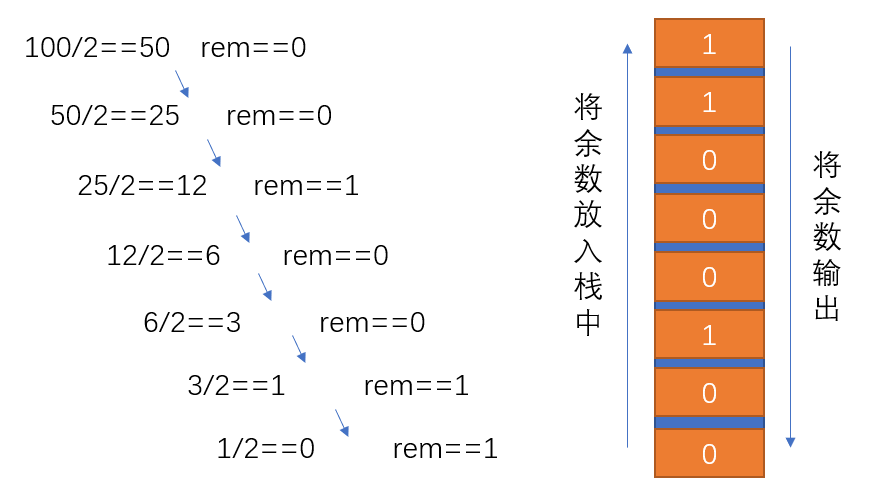栈
栈是一种非常常见的数据结构,在程序中的应用非常广泛
我们看一下数组
数组是一种线性结构,并且可以在数组的任意位置插入和删除数据。但是在某些时候需要,必须要对这种任意性进行限制,栈和队列就是比较常见的受限的线性结构


如果此时的数据比较多,就会导致效率比较低,
现在再来看栈结构
栈结构示意图

栈(stack)是一种受限的线性表,先进后出[LIFO](或者说是后进先出)
- 其限制是仅允许在表的一端进行插入个删除运算,这一端被称为栈顶,相对的,把另一端称为栈低;
- LIFO(last in first out)表示就是后进入的元素,第一个弹出栈空间。类似于自动餐托盘,最后当上面的托盘,往往先拿出去使用;
- 向一个栈插入新元素又称为进栈、入栈、或压栈、它是把新元素放到栈顶元素上面,使之成为新的栈顶元素
- 从一个栈删除元素又称为出栈或者是退栈,它是把栈顶元素删除,使其相邻的元素成为新的栈顶元素
栈的操作
栈常见的操作:
<1> push(element):添加一个新元素到栈顶的位置
<2> pop():移除栈顶的元素,同时返回被移除的元素
<3> peek():返回栈顶的元素,不对栈做任何修改
<4> isEmpty():如果栈里没有任何元素就返回true,否则就返回false
<5> size():返回栈里的元素个数。跟length属性相似
<6> toString():将栈结构的内容以字符形式返回
栈结构的实现
实现栈结构有两种比较常见的方式:
- 基于数组实现
- 基于链表实现
//封装栈类 function Stack() { //栈中的属性 this.items = [] // push(element): 添加一个新元素到栈顶的位置 Stack.prototype.push=function(element){ this.items.push(element) } // pop(): 移除栈顶的元素, 同时返回被移除的元素 Stack.prototype.pop=function(){ return this.items.pop() } // peek(): 返回栈顶的元素, 不对栈做任何修改 Stack.prototype.peek=function(){ return this.items[this.items.length-1] } // isEmpty(): 如果栈里没有任何元素就返回true, 否则就返回false Stack.prototype.isEmpty=function(){ return this.items.length==0 } // size(): 返回栈里的元素个数。 跟length属性相似 Stack.prototype.size=function(){ return this.items.length } // toString(): 将栈结构的内容以字符形式返回 Stack.prototype.toString=function(){ var result='' for(var i=0;i<this.items.length;i++){ result += this.items[i]+' ' } return result } } //使用栈 var stack = new Stack() //验证添加 stack.push(1) console.log(stack,'添加') //验证移除 stack.pop() console.log(stack,'移除') //验证是否为空 console.log(stack.isEmpty())

使用栈将十进制数据转换成二进制数据
我们看一下十进制转换成二进制需要的步骤


// //封装栈类 function Stack() { //栈中的属性 this.items = [] // push(element): 添加一个新元素到栈顶的位置 Stack.prototype.push=function(element){ this.items.push(element) } // pop(): 移除栈顶的元素, 同时返回被移除的元素 Stack.prototype.pop=function(){ return this.items.pop() } // peek(): 返回栈顶的元素, 不对栈做任何修改 Stack.prototype.peek=function(){ return this.items[this.items.length-1] } // isEmpty(): 如果栈里没有任何元素就返回true, 否则就返回false Stack.prototype.isEmpty=function(){ return this.items.length==0 } // size(): 返回栈里的元素个数。 跟length属性相似 Stack.prototype.size=function(){ return this.items.length } // toString(): 将栈结构的内容以字符形式返回 Stack.prototype.toString=function(){ var result='' for(var i=0;i<this.items.length;i++){ result += this.items[i]+' ' } return result } } function decToBin(num) { //定义一个栈的对象,用来保存余数 var stack = new Stack while (num > 0) { //获取余数并存入栈中 stack.push(num % 2) //获取整除后的结果作为下一次运算 num = Math.floor(num / 2) } //从栈中取出 var result = '' while (!stack.isEmpty()) { result += stack.pop() } return result } //测试 console.log(decToBin(100))




